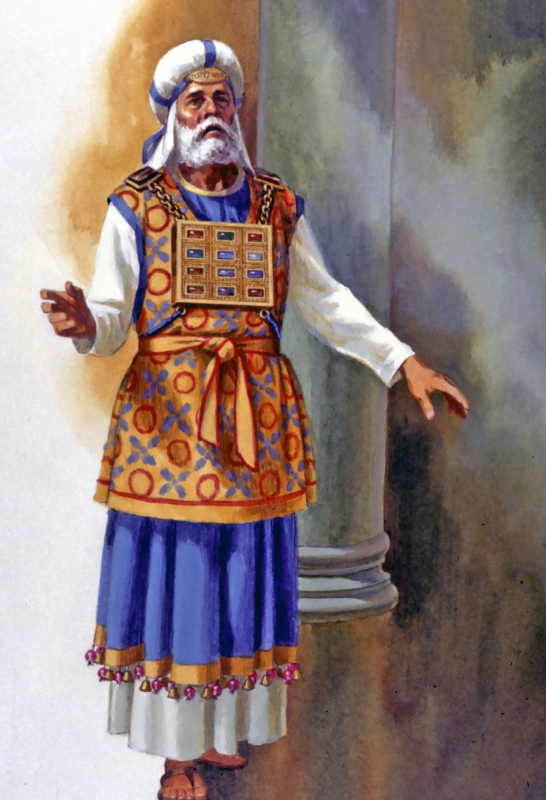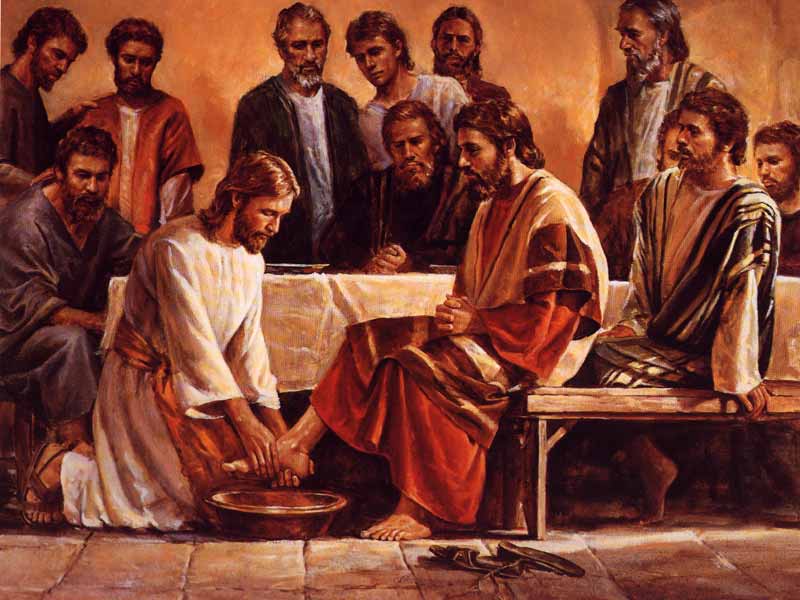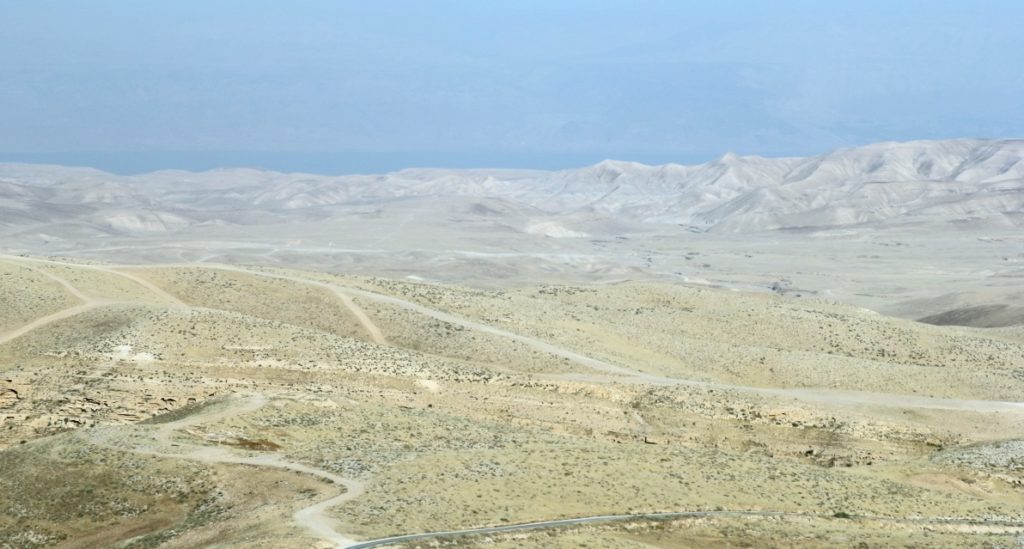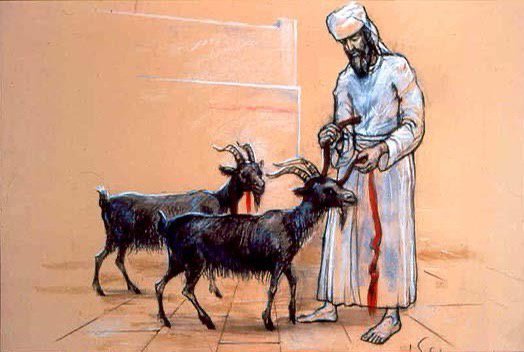
The Significance of Yom Kippur
Published on: 16.9.2022By: Dr. Jürgen Bühler, ICEJ President
We started a teaching series last week on the fall Jewish High Holidays, with an excellent talk about Rosh Hashana from my colleague Dr. Mojmir Kallus. Today, I am addressing the significance of Yom Kippur, the Day of Atonement, which is the most holy day on the Jewish calendar every year. And next week, we will cover the prophetic significance of Succot, or the Feast of Tabernacles, which we will be celebrating in just a few weeks here in Israel.
Yom Kippur is the most sacred day on the Jewish calendar, and we can read about it in a number of passages in the Bible, but I want to refer to two particular passages. One is Leviticus chapter 23, which speaks about all the autumn holidays and all the holidays during the year. It starts with the Shabbat, the spring holidays, and then the fall holidays that start with the Feast of Trumpets, or Rosh HaShana. Then in Leviticus 23:26 it says that the tenth day of the seventh month “shall be for you a time of holy convocation”, and “you shall afflict yourself” and present a food offering to the Lord, and you shall not do any work on this day. “For it is Yom Kippur (the Day of Atonement), to make atonement for you before the Lord your God.” Whoever is not afflicted on that very day shall be cut off from His people. Whoever does any work on that day, that person God will destroy among His people. It is a statute forever throughout your generations in all your dwelling places. It shall be to you a Shabbat Sabbath of “solemn rest”. You can translate this in Hebrew as a Sabbath of complete rest.
Now, Yom Kippur is still today a very solemn day here in Israel. If you live here, you will see that even among the secular people, even people who might be atheists, they still see this as a core part of Jewish tradition and they fast on this day. They estimate today that 80% or more of the population here in Israel are fasting on Yom Kippur. The Bible actually does not speak about fasting in particular, but it says to “afflict your soul”. So they are fasting, meeting in the synagogues, and they are praying. And the weeks before this are also a season of preparation. Every morning, you can hear the shofar blowing in the synagogues as the people get ready and prepare their hearts to meet with God. They ask the Lord for forgiveness, and they try to reconcile with neighbors and friends. So, it is a very unique time in the Hebrew calendar for Israel.

There is another passage that speaks about Yom Kippur. In Leviticus 16, the entire chapter is dedicated to this special day. It starts out: “And the Lord spoke to Moses after the death of the two sons of Aaron…” What is happening here is a detailed description of what needs to take place on Yom Kippur. And just to give you a brief summary, we know this is the only day in the year when the High Priest went into the very Holy of Holies, when there was still a Temple here in Jerusalem. And he was meeting with God, asking for forgiveness for his people, and dedicating and sanctifying the whole Temple again for service.
There also were two goats, one of which was slaughtered and the blood was brought right into the presence of the Lord. The other one, the High Priest was laying his hands on that goat, confessing the sins of the entire nation of Israel over the goat, and this “scapegoat” was carrying the sins of the entire nation into the desert to a figure called Azazel – which I believe speaks of the devil himself. So, it was on that day that the Lord brought atonement to the entire people of Israel.
That is a short synopsis of what was taking place on Yom Kippur. And the interesting thing is that Leviticus chapter 16 says the Lord spoke to Moses about this day of atonement after the death of the two sons of Aaron. In a way, some rabbis describe it as an emergency plan that God set up after the death of these two priests. If you go to Leviticus 10, you will read that these two priests – the sons of Aaron – came into the very presence of the Lord and offered strange fire. They broke the commandment of the Lord regarding the Tabernacle and the way to bring sacrifices. And they both died instantly. So, in Leviticus 16, the Lord says He does not want these things to happen again, and He gives the proper way for the priests to enter His presence. There is a certain procedure to follow to be able to stand before the cloud of glory over the mercy seat in the Holy of Holies.
If you look at what the rabbis say, it is not so much about when you can enter the Holy Place, but it is more about the manner in which you enter the presence of the Lord. There are certain procedures that you need to fulfill, a divine protocol. And when I was reading that, I could not help but think of the television images we see today with the passing of Queen Elizabeth and the incredible protocol that surrounds the royal family in the United Kingdom. The way a people can approach their king or queen is quite set. And the Lord says in a way, since He is the King of the whole earth, there is a certain protocol that you need to keep when you are entering His presence. You cannot just sloppily enter His presence. Remember, our God is a consuming fire. And there is a certain protocol that needs to be followed to come before Him. So, this is the background to Yom Kippur, and how the High Priest must approach Him.
Now, one of the most amazing things about Leviticus 16, much of the text deals with the two goats, only one of which stays alive and is responsible for the atoning actions on that day. In verse 20 and following, it says that Aaron shall lay both his hands on the head of the live goat and confess over it all the iniquities of the people of Israel, and all their transgressions and all their sins, and then send it away into the wilderness, led by “a man in readiness” for this task. The goat shall go free and bear all the iniquities on itself into a remote place. This is so significant! On the Day of Atonement, the rabbis said they would tie a scarlet rope or thread on the horns of that scapegoat, and as it was entering into the wilderness, this man of readiness leading the goat would witness that scarlet thread turn white. This was taken as a supernatural sign that God in heaven had accepted their offering and the sins of the people of Israel were taken away by that goat. This was the most important thing on that day.

Let us continue reading about the strict protocols that needed to be kept on Yom Kippur. Again, in Leviticus 16 it says you have to be careful, because He is a Holy God. Aaron had to come into the Holy Place with the blood of a bull for a sin offering for himself and then the blood of a goat for a sin offering, to make atonement for the Holy Place because of the sins of the people. Then he had to strip off his linen garment, bathe and put on His priestly clothes and tie a linen sash around his waist, plus put on his linen turban. These are the holy garments of the High Priest. That means there was a special dress code. He had to purify himself, he had to bathe himself, and if you read traditional Jewish texts, in the Talmudic times of the Temple there was even a further requirement that the High Priest was separated from his wife and family for seven full days before Yom Kippur. This was to keep him away from any type of possible impurity. He was in lockdown or quarantine, so to speak, for an entire week.
Then on the eve of Yom Kippur, as the Hebrew day started, he was not allowed to speak to anyone. The priests also made sure he would not fall asleep lest something would render him unclean for service. The priests were surrounding him, reading scriptures, snapping their fingers to keep him awake, but not touching him so as not to defile him for service the next day. So, there was a whole procedure that made sure that the High Priest was in a pure and holy condition to carry out his special duties on Yom Kippur.
What comes next is also very significant for the Day of Atonement. It was not so much about a broad atonement for the people, but it had to do with the purification of the priesthood. The sacrifices were not only for the High Priest and his immediate family, but for the whole house of Aaron, for all the Levites and everyone who was ministering in the Temple. Thus, we already can see the weakness of the first covenant with Moses, that there was something not perfect because the officiating priests were not perfect themselves. They needed to bring a sacrifice for themselves. There actually are quite a number of passages that speak about the sins carried by the priests into the Holy Place. One such passage is Exodus 28:36, speaking of the gold signet on the turban of the High Priest, which was needed because the priest might be performing his duties with a wrong motivation, for instance.
Now, some may say this indicates the weakness of the old covenant, but let us go to Philippians 1:15-17. Here, Paul says that among those who are serving even under the New Covenant, some are preaching Christ from envy and rivalry, some from goodwill and “some out of selfish ambition, not sincerely, but thinking to afflict me in my imprisonment.” Here, Paul says there might be people who carry the holy things of the Kingdom of God and the altar of service, in the very presence of God and in service to the people of God, but with selfish ambition. Paul repeats this in Philippians 2:3, saying we should “do nothing from selfish ambition or conceit, but in humility count others more significant than yourselves.” In verse 2:21, he warns of those who “seek their own interests, not those of Jesus Christ.”
So, we see even in the Church today, there might be impurity in the sanctuary, there might be wrong motivations as to why people want to serve the Lord. There is no room to point the finger at anyone else. Rather, I believe this is a time for all of us to go into introspection of ourselves and ask ourselves, what is the very motivation of why I am serving the Lord? Do I ask what is in this for me? Or do we serve the Lord out of a pure dedication and will to serve Him. This is the main theme of Leviticus chapter 16, which was largely dealing with the sins of the sanctuary. Those who minister before the Lord are held to high account. Even though we come with a beautiful outward appearance, with beautiful garments, there still might be sin involved in the way we are approaching His presence. And God says before you can really atone for the sin of the whole nation, you first need to atone for your own self.
We also see this in the Book of Hebrews, chapter five. Here, the New Testament acknowledges that the Aaronic priesthood was beset with the very same weaknesses as everyone else. The word of God makes it very clear that even the most holy ministers of the Kingdom of God, who serve the purposes of God, also are beset with weaknesses and sins, and they need to bring forth atonement for their own sins. In Hebrews chapter seven, the writer highlights this very point again by proclaiming that Jesus, our High Priest, was wholly innocent, unstained, separate from sinners, exalted above the heavens, and there is no need for him, unlike those Aaronic high priests, to offer sacrifices for his sins.
Now, if you are Jewish and listening to that, you might say, “Well, this is New Testament theology or only the thoughts of some Christian”. But the Book of Hebrews says even the Old Testament prophets themselves found fault with the Mosaic covenant. We read this in Hebrews 8:8, quoting from Jeremiah 31:31 and following, where the Lord speaks of the need to establish a new covenant with the House of Israel where the sins of the priests and people are not just overlooked from year to year, but forgiven and forgotten forever. This would be a covenant in which the Lord will write His laws on their hearts.
That means the Hebrew Bible already recognized in the old covenant a system that was imperfect, even on the most holy day, when the nation was coming before God and needed atonement. The very priesthood of Israel needed, first of all, to have atonement for their own lives, for their own priesthood. And there is no reason for any finger pointing, as we have seen from Philippians, that this is exactly the same also in churches and in the Kingdom of God. We need to look at ourselves, what is our very motivation to serve the Lord? And we might have to come ourselves again and again to the Lord and say: “Forgive us, because we need a fresh start in how we even carry out our service before the King of kings”, especially when we compare ourselves with Jesus.
We also have in Philippians 2:5 a call to have this mind within ourselves which was in Christ Jesus, who, though he was in the form of God, did not count equality with God as a thing to be grasped. But he emptied himself by taking on the form of a servant, being born in the likeness of man. And being found in human form, he humbled himself and became obedient, even to the point of death, yes, even to death on the cross. That means, when Jesus walked here on this earth, there was no selfish ambition in him. Everything that he did was out of love for you and me.

Indeed, the Bible says he was the blameless Lamb of God. He was the blameless, innocent High Priest who was serving all mankind. And he was not only forsaking the glory that he had with the Father, showing his incredible selflessness. But we read in the Gospel of John chapter 13, that even on that night when he knew everything was handed over to him by the Father, He did not glory in his position as the only Son of God.
The Bible says he took his servant cloth, and wrapped it around him, and he was walking one by one to the disciples, and He washed the feet of every disciple.
So, Jesus is our great High Priest, who does not need to atone for himself, but who was walking that blameless, selfless life here on Earth, and was even ready to serve us all the way to a cruel death on the Cross.
Now, consider again with me this whole procedure concerning the High Priest laying his hands on the scapegoat and confessing all the sins of the people, so it might carry those sins off to the wilderness and this demonic figure Azazel. This very important part of the Day of Atonement indicates in the original Hebrew wording, in Leviticus 16:20, that this figure had a right or claim to the scapegoat, because this goat was taking the blame, so to speak, for all the sins that were committed. Paul says the wages of sin is death, and because of our own sins, Satan has a rightful claim on us. But he had no claim on Jesus, as he said himself in John 14:13. Jesus was the pure and perfect Lamb of God, without sin. And even though the sins of the whole world were resting on Yeshua on that day when he carried them on the Cross, they did not really stick to him because there was nothing to stick to. He was a pure, holy being.

According to Leviticus 16:21, this scapegoat was led by the man of readiness to a remote area in the wilderness, over the Mount of Olives just east of Jerusalem. If you look at this area even today, you instantly go from a green area down towards the dry, barren desert. And that was exactly the place where the law of Moses instructed them to take the scapegoat.
There are quite a number of passages in the Bible that speak about the desolate land as a place of devastation, unsuited for man. The penalty of sin is death and eternal damnation or separation from God. And the Day of Atonement shows us this beautiful way of how we can escape damnation, when we realize the Lamb of God has already carried away our sins.
I also want to highlight some very interesting Hebrew words that you will find here in this little passage about the scapegoat. The first word is in Leviticus 16:22, that the scapegoat “shall bear all their iniquities”. This exact word actually appears again in the very well-known passage of Isaiah chapter 53 – the passage of the suffering servant. This passage says: “Surely, he has borne our grieves and carried our sorrows, yet we esteemed him stricken, smitten by God, and afflicted. But he was pierced for our transgressions; he was crushed for our iniquities.” (Isaiah 53:4-5a) It is the same concept as in Leviticus 16. At Calvary, Jesus was bearing the consequence of sin, just like this scapegoat in the desert. And the very same verb appears again in Isaiah 53:12 when it says, “he bore the sins of many”. This was at the heart of the Day of Atonement, that the people could get right with God because the scapegoat was carrying their sins away on his shoulders.

There is another very interesting Hebrew word that needs to be mentioned, that the scapegoat shall bear all the iniquities “to a remote place”. Again, it amazingly appears also in Isaiah chapter 53. The scapegoat is to be taken away to a remote or actually a “cut-off area”, a place cut off from humanity. That means the fate of that scapegoat was to be cut off from the blessings of God, to be cut off from the land of the living and from the people of God, with a sentence and the guilt of the people on him. It’s a very tragic fate. Isaiah 53:8 says that the suffering servant would be “cut off out of the land of the living”. It is exactly the same word used for the scapegoat sent into the wilderness. So, we see here that Jesus was not just the Lamb of God, that is our Passover lamb, but here he is the goat being sent forth on that great day of atonement for the nation.
There is one more point that I would like to make about the High Priest on Yom Kippur. When the man of readiness came back from the wilderness and reported the scarlet thread had turned white, signifying that God had accepted their atoning sacrifice, the High Priest then had to strip off his simple linen garment, wash his body, and then change into the royal vestments of the High Priest for his second appearance in the Holy of Holies. He was waiting for the good news from the desert. And when this messenger arrived, there was a big wave of relief and joy coming over all the people. But secondly, this meant it was time for further action by the High Priest in the Holy of Holies, this time not in ordinary clothes like the rest of the people, but in his royal vestments. The Talmud says this involved quite a number of sacrifices, mostly of incense, which filled the place of God’s presence.
Now, return with me to Hebrews chapter eight, where it says that when Jesus brought forth his sacrifice, he not only overcame death, but he went straight to the Father. He actually entered for three days into the very realm of Satan and tasted death for everyone (Hebrews 2:9). And after three days, he was resurrected and appeared again to the people. And then he went up to the Father, and was seated at the right hand of God. And what has been happening ever since in the heavenly places? The Book of Revelation 1:13 tells us He has put back on his royal garments, like the High Priest would put back on his priestly garments. We see Jesus today seated at the right of the Father in all His glory, and in all His majesty in the throne room of God (Romans 8:24). And the scene is much the same as that High Priest in the Temple, bringing forth incense offerings to the Lord. Indeed, we see Jesus seated at the right hand of the Father interceding for you and me. That is the ministry of Jesus, our sinless High Priest who has entered into the very presence of God and given us access to the throne of grace as well.
Hebrews 9:25-28 says Christ came once to suffer and bear the sins of many, but he will appear a second time, not to deal with sin but to save those who are eagerly waiting for him. He entered God’s presence once for atonement of sins and came out proclaiming forgiveness in his name. And He will come out a second time, not to deal with sin but as our Redeemer and greatly expected King of kings and Lord of lords, to reign forever and ever. He will put His feet on the Mount of Olives, and we will see Him and we will enter this incredible salvation in our new eternal bodies – washed clean by the blood of Yeshua. Amen!
For the entire teaching on “The Significance of Yom Kippur” by ICEJ President Dr. Jürgen Bühler, make sure to watch the ICEJ Weekly Webinar from Thursday, 15 September 2022 below.